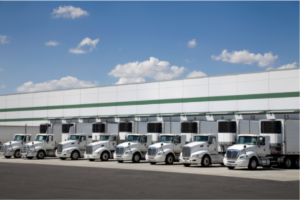The Commercial Mortgage Industry, unlike with residential mortgages, does not have a standardized application form. For this reason, we will not ask you to complete a Form 1003 or similar document as part of the initial application process. Each funder has its own application, but we won't bother with their forms until we underwrite the loan and choose a program and funder. The SBA, USDA, Fannie/Freddie do have some standard forms, which we will help you complete along the way, if applicable.
For most transactions, we can start the process if we receive at least the following pieces of information:
- Property Details from the offering flyer (provided by listing agent) on purchase transactions or from public data on refinance transactions.
- Personal Financial Statement (PFS) from each owner/borrower including Schedule of Real Estate Owned
- Business Financial Statements (2-3 years & YTD or T-12 - Trailing 12 months)
- Personal & Business Tax Returns (2-3 years if bank or agency loan)
- Rent Roll for the subject property if not 100% owner-occupied - Commercial or Multifamily
- Credit Report (Soft Pull)
- Most recent mortgage statement for refi transactions
- Three months' bank statements to show down payment and cash reserves (90-days seasoned)
The information above will usually give us enough details to put together a tentative application package. We will also need to know the transaction details, such as purchase price, loan amount, purpose, etc.
Keep in mind that most funders are going to have the following basic requirements:
- Net worth equal to or greater than the loan amount.
- Debt-Service Coverage Ratio (DSCR) of at least 1.20 (This means Net Operating Income/Monthly Payment is at least 1.20).
- 9-12 months' payment cash reserves (whether interest-only or principal and interest).
- Credit score of 620 or better (700+ for start-ups) in most cases.
- 90%-95% occupancy for tenanted properties for at least three months.
If you do not satisfy the above requirements, we can still help you. A bridge loan may give you time to bolster your qualifications over the next 2-3 years, until you can qualify for permanent financing. This is often used when you are purchasing a property that needs major rehabilitation or perhaps is under-occupied.
Bridge loans can be interest-only or have capitalized interest to assist with qualifying. Bridge loans are more flexible on credit, but may require increased cash reserves. For construction loans, you need to have at least 10% of the construction cost in liquid funds on-top of a reserve requirement of 6-9 months' payments and down payment funds if you are purchasing the land concurrent with the new loan.





























